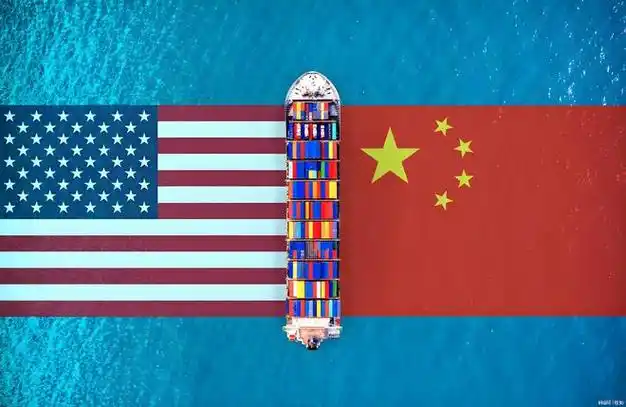US Tariff Cuts on Chinese Steel Products Offer Short-Term Boost, but Global Supply Pressures Emerge
After the release of the Joint Statement of the China - US Economic and Trade Talks in Geneva, the export tariffs on Chinese steel and steel products to the US were reduced to 65% and 63% respectively. Due to the slight relaxation of steel tariffs within the 90 - day exemption period and the limited total volume of Chinese steel exports to the US, Wang Guoqing, Director of the Lange Steel Research Center, believes that this round of US tariff adjustments may support the toughness of steel's indirect exports.

According to the foreign - trade data of the first four months released by the Customs, China's steel exports continue to show a growth trend. In April, China exported 10.462 million tons of steel, a year - on - year increase of 13.4%; imported 522,000 tons of steel, a year - on - year decrease of 20.7%. From January to April, China exported 37.891 million tons of steel, a year - on - year increase of 8.2%; imported 2.072 million tons of steel, a year - on - year decrease of 13.9%.
When analyzing the trend of steel exports, Wang Guoqing said, "Currently, China's steel exports still have a price advantage, but the year - on - year increase in overseas steel supply will form a certain restriction on the external demand space for China's steel."
The monitoring data of the Lange Steel Research Center shows that as of May 8, the FOB export prices of hot - rolled coil in India, Turkey and the CIS region were $595/ton, $550/ton and $460/ton respectively, and the FOB export price of hot - rolled coil in China was $462/ton. In terms of overseas supply, in March, the total crude steel output of 69 countries included in the statistics of the World Steel Association was 166.1 million tons, a year - on - year increase of 2.9%. The monitoring data of the Lange Steel Research Center shows that in March, the crude steel output of regions other than China in the world was 73.3 million tons, a year - on - year increase of 0.5%.
At the same time, the global manufacturing index continues to decline, and the external - demand prosperity is still weak. Wang Guoqing pointed out that the export order index of China's steel industry continues to decline within the contraction range, and the inhibitory effect of the intensifying trade friction on steel exports will gradually emerge.
In April, the global manufacturing index showed a downward trend. The global manufacturing PMI released by the China Federation of Logistics and Purchasing in April was 49.1%, a decrease of 0.5 percentage points compared with the previous month. The J.P. Morgan Global Manufacturing PMI in April declined in the expansion range, reaching 49.8%, a decrease of 0.5 percentage points compared with the previous month. The continued weakness of the global manufacturing prosperity reflects the pressure on the global economy. Disturbed by the US's wanton use of tariffs, the risk of global economic downturn is also gradually increasing. The manufacturing purchasing managers' index of China released by the China Federation of Logistics and Purchasing and the Service Industry Survey Center of the National Bureau of Statistics in April shows that the new export order index of China's manufacturing industry in April was 44.7%, a decrease of 4.3 percentage points compared with the previous month, and the demand - shrinking tendency caused by the changes in the external trade environment continues to appear.
The export order index of Chinese steel enterprises also continues to operate within the contraction range. The new export order index of steel enterprises surveyed by the Steel Logistics Professional Committee of the China Federation of Logistics and Purchasing in April was 41.0%, a decrease of 0.1 percentage points compared with the previous month; the new export order index of steel circulation enterprises surveyed by the China Iron and Steel Association & Lange Steel Network was 43.7%, a decrease of 5.6 percentage points compared with the previous month.
The trade - friction situation is also not optimistic. On April 3, the Foreign - Trade Secretariat of the Ministry of Development, Industry, Trade and Services of Brazil issued a notice, making a positive preliminary anti - dumping ruling on galvanized and galvalume steel coils originating in China; on April 21, India announced a 12% temporary tariff on some imported steel products to protect Indian domestic steel manufacturers from the adverse effects of the surge in imports; on April 22, the Canada Border Services Agency issued a notice, initiating an anti - dumping investigation on carbon steel wires and alloy steel wires originating in or imported from China, India, Italy, Malaysia, Portugal, Spain, Thailand, Turkey, Vietnam and the Taiwan region of China; on April 24, the Ministry of Strategy and Finance of South Korea issued a notice, deciding to impose a temporary anti - dumping duty on hot - rolled carbon steel or alloy steel medium - heavy plates originating in China, with a tax rate of 27.91% - 38.02%. In addition, many countries are also strictly checking the place of origin and transit trade.
Wang Guoqing believes that based on the alleviation of the foreign - trade environment, China's steel exports are expected to maintain a certain toughness in May and June, but the momentum of trade protection will inhibit subsequent steel exports.



